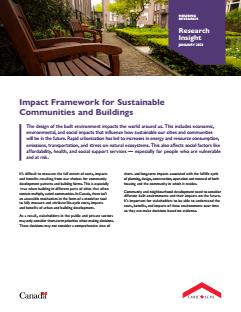About the framework
The goal of this research is to:
- Explore whether public and industry stakeholders need a tool that can do this type of analysis.
- Identify what must be defined and included in a framework.
Based on the outcome of this framework, the next step is to:
- Consider how to create and implement a tool.
The framework was developed using a bottom-up approach. The research team:
- talked to organizations and people
- looked at what data was available
- outlined reliable and the most useful calculation methodologies
- analyzed existing studies, models and tools to see what else was out there and how this framework could be different or better
The project team worked with multiple stakeholders to refine the framework methodologies. An external-user advisor group:
- provided feedback
- helped with the assessment of industry needs
- identified use cases that have the potential to be analyzed by a future tool built from the framework
The external-user advisor group included:
- government
- academia
- private industry
A CMHC working group was also consulted for this project. The group:
- helped conduct a feasibility assessment
- identified supporting data, studies, tools and other resources
This research found that it is possible to create a tool. The research team developed a framework that can be used to build the tool.
Key findings
The project created a framework to help identify, understand and compare the environmental, economic and social impacts of different patterns of urban development and building types in Canada. This framework is an important step in understanding the need for and feasibility of developing a tool. This framework can be considered as the minimum viable product for a future tool if it is developed.
The following insights were identified when developing the framework:
- the character of the built environment is a determinant of well-being
- the design and development of the built environment can be suboptimal
- community and neighbourhood planning can be fragmented and biased in favour of short-term outcomes
- planners and other professionals want to include social and environmental considerations in policy
- there are few tools that holistically evaluate the impacts of built environments
Framework overview
The conceptual framework has 5 steps:
- Use cases: This would identify the geography and scenarios being considered. If the framework is later used to build a tool, the use cases will be defined by the user of the tool.
- Geography: This is determined by the use case and would be used to identify relevant local data, such as those from online data sources or libraries.
- Scenarios: These are defined using archetypes of neighbourhood layouts and buildings, which represent different configurations of the built and natural environments. A library of representative archetypes has been defined from pre-existing model databases and relevant studies.
- Systems dynamics model: This would be used to evaluate the quantitative social, environmental and economic themes described in the framework and connected by relationships. Quantitative outputs or evaluation indicators would be calculated in the systems dynamics model once built into a tool.
- Multi-criteria analysis: This would be created by combining the quantitative evaluation indicators and qualitative social inputs from the user-defined scenario. The framework describes a multi-criteria analysis process for these outputs. The outputs can be a powerful tool to compare multiple scenarios.
The steps are connected by how information and outputs flow between them. The conceptual framework describes how information flows from inputs to outputs within the economic, social and environmental themes and between themes. This is done by showing the relationships within and between the themes.
Implications for the housing system
This framework improves our understanding of what is needed to assess the economic, social and environmental sustainability of built environments in Canada. Governments, planners, designers, developers and citizens can use it when making decisions about housing.
If the framework leads to the development of a tool, stakeholders will be able to use it to help them make evidence-based decisions to support sustainable communities and housing. Informed, evidence-based decisions can lead to positive outcomes, such as helping to increase housing supply.







 Share via Email
Share via Email
